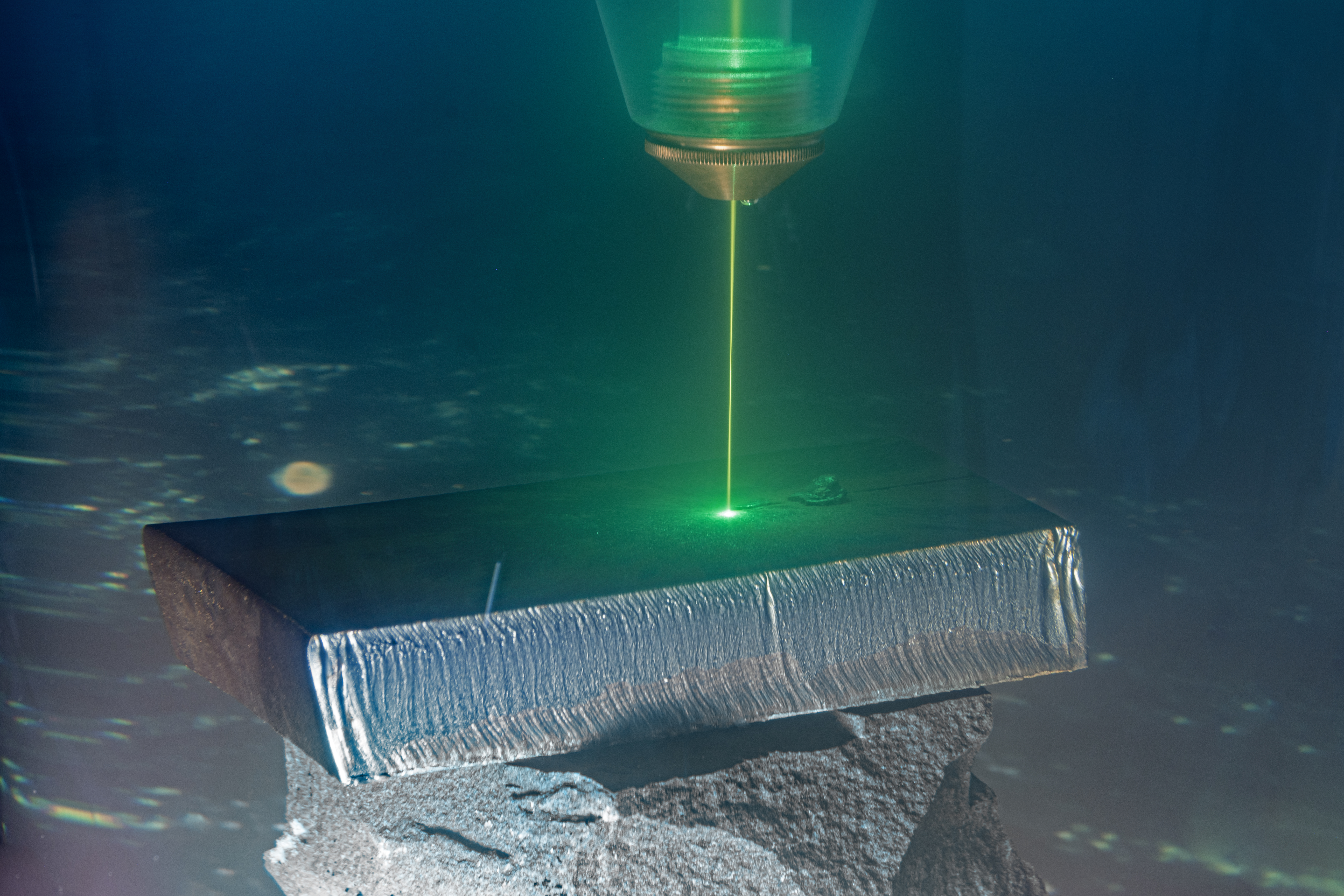Laser Material Processing for Underwater Applications

Motivation
The earth is covered to 71% with water. The remaining 29% are considered to be 61% inhabitable, which means that only 18.3% of the planet is available as living space for the more than 8 billion people. In the future, mankind's hunger for energy is to come almost entirely from regenerative sources. So it will be tight.
As a new living and economic space, the ocean, in particular the offshore areas, has the greatest potential due to its size and climate. Suitable manufacturing technology is indispensable for tapping this potential. Cutting and joining are processes that must be carried out primarily at the place of use or in the sea. The relationship between lasers and water was previously regarded as that of the devil and holy water.
Innovation
The wavelengths green and blue have no significant absorption in water and increased absorption on the workpiece. Accordingly, the expulsion medium gas can be replaced by water. Water is incompressible and flows as a liquid more laminar than gas. Accordingly, the required expulsion force can be transferred much better to the cutting front with a significantly lower volume flow. As a result, a significantly smoother cutting edge should form and the detachment of the melt from the underside of the workpiece should also be significantly more successful. Micro-evaporation in the water could act as an additional effect. The molten material usually has temperatures above the boiling point of water. Although the evaporation of the water requires additional energy, the expanding water vapor generates an additional expulsion force directly at the required location and could positively influence the material expulsion.
Aims and Procedure
First, a mathematical-physical process description is carried out to estimate the achievable process speed as a function of laser power, material and thickness as a tool to make predictions for the future performance increase of the laser sources.
The solution of the challenge of humidity and optical components is followed by the transfer into a suitable process optics for underwater cutting with water as expulsion medium.
Finally, a functional test environment is set up for the experimental verification of the presented innovation.
In parallel, the suitability for laser buildup welding is tested.
Perspectives
Fraunhofer IWS is active in the competence network Ocean Technologies, which bundles the off-shore, sea and deep-sea activities of the Fraunhofer Gesellschaft. Currently, an underwater pilot plant is being built in the Baltic Sea at the Rostock location. This will create an underwater experimentation area for typical fields of application such as pipelines, cables, munitions and offshore installations (wind turbines, platforms, etc.).
With the completion of this test field Fraunhofer joint projects are planned to advance the Fraunhofer-wide use of the test field. This project prepares Fraunhofer IWS to become active on this test field.
Application areas of this technology are MRO (Maintenance, Repair & Overhaul) of metallic offshore installations. Offshore, wear is higher due to the location of use. The typical approach is to cut out (laser cut) the damaged area and insert a repair piece. The demand will increase exponentially in the future.
Furthermore, on-shore applications, but taking place in water, are also of interest. These include underwater laser cutting of thermally sensitive components, cutting of fuel rods in nuclear power plant dismantling and opening of chemical and self-igniting warfare agents with water as a protective atmosphere.
We believe that after Green Economy, Blue Economy will be a mega trend in the next decade.
 Fraunhofer Institute for Material and Beam Technology IWS
Fraunhofer Institute for Material and Beam Technology IWS